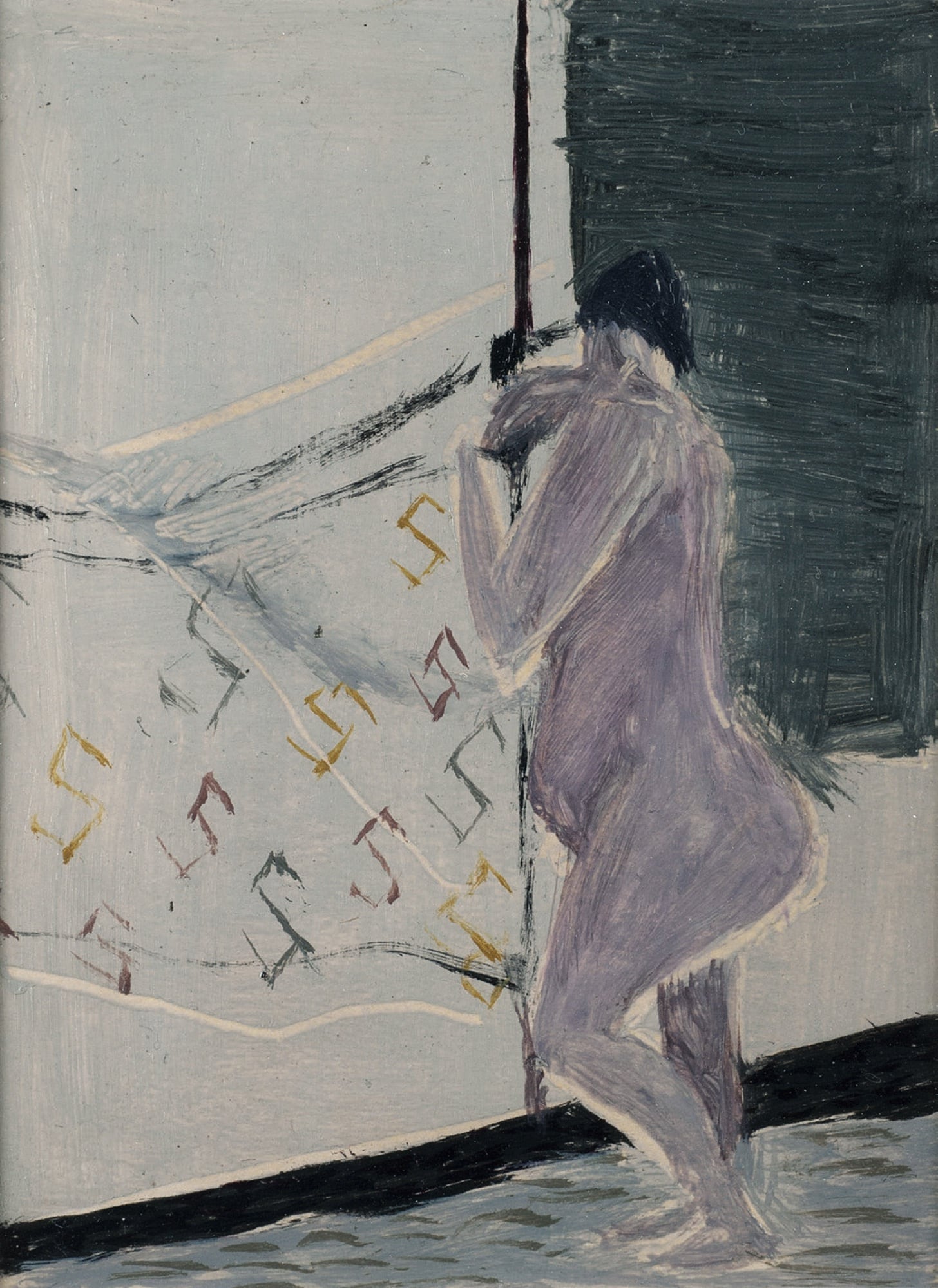03 February 2016
Bedri Rahmi Eyüboğlu (1911-1975)

Bedri Rahmi Eyüboğlu
Nude, c. 1930
Oil on canvas
80 x 60 cm
Lüset-Mustafa Tavi̇loğlu Collection
After he graduated from the Academy of Fine Arts studying with İbrahim Çallı, Bedri Rahmi Eyüboğlu went to Paris in the 1930s and worked in the studio of André Lhote, where he met his wife Ernestine (Eren Eyüboğlu).For Eyüboğlu, the nude, particularly in his early period, was a means through which he could explore different modernist styles. The colorful, decorative elements seen in the early nudes of Eyüboğlu, recognized for his passion for the visual materials accumulated from folk art of Anatolia, also hint at his search for a synthesis of East and West, nurtured particularly in the interest he had in renowned French artist Henri Matisse.

Bedri̇ Rahmi̇ Eyüboğlu
Hammam, 1952
Gouache on paper
57 x 47 cm
Zeyno-Muhsi̇n Bi̇lge Collection
A series of small and rather similar nudes Bedri Rahmi Eyüboğlu and Eren Eyüboğlu produced in the early 1930s almost resemble a ‘visual conversation’ that focus on a pictorial search. It is also possible to find the visual reflections of this earlier search in the synthesis Bedri Rahmi Eyüboğlu reached with his stylistic abstractions in the 1950s.

Rahmi̇ Eyüboğlu
Nude, 1932
Watercolor on paper
15 x 20 cm
Lüset-Mustafa Tavi̇loğlu Collection
EREN EYÜBOĞLU (1907-1988)

Eren Eyüboğlu
Nude, Late 1920’s
Oil on canvas
64 x 53 cm
Private Collection
Eyüboğlu in 1936, Ernestine Leobovici was an artist of Romanian origin. A nude she executed in her adolescent years contains clues about her subsequent interest in modern painting. In the paintings of Eren Eyüboğlu, who studied at the Iasi Academy of Fine Arts, moved to Paris in 1929 to study fist at Académie Julian, and later at the studio of André Lhote for four years, the nude not only contains a rich repertoire of poses, but also heralds a stylistic search that nonetheless preserves her Expressionist tendencies.

Eren Eyüboğlu
Nude (Portrait), 1946
Oil on hardboard
70 x 50 cm
Eyüboğlu Ai̇lesi̇ Collection
Often depicting her nudes as part of a setting, Eren Eyüboğlu allows the viewer to feel that she maintains the anatomical characteristics of the figures she deforms. Both in terms of the Cézannesque ‘constructivist’ brush strokes that integrate her surfaces and in terms of her sensitivity towards color, Eren Eyüboğlu’s paintings reflect the weight she places on form.

Eren Eyüboğlu
Purple Nude, Undated
Gouache on paper
18,5 x 13,5 cm
Zeyno-Muhsi̇n Bi̇lge Collection


Nuri̇ İyem
Nude, 1951
Oil on canvas
59,5 x 51,5 cm
Nur-Aytaç Manço Collection
Treating the nude as concept through which he explored the connection between subject and form, Nuri İyem once stated that it was quite difficult to distract the viewer from the ‘subject’ and guide him towards looking at the ‘painting,’ arguing that nude painting was, in that respect, a genre of art that challenges both the artist and the viewer. “After all, it is no easy feat detaching the viewer from the subject and allowing him to enter the world of the painting. Some might even put works of Chardin in the dining room, to increase one’s appetite.”

Nuri̇ İyem
Nude, 1954
47 x 57 cm
Mehmet Hali̇t Kılıç Collection
HAKKI ANLI (1906-1991)

Hakkı Anlı
Nude, 1933
Oil on canvas
57,5 x 46,5 cm
Central Bank of the Republic of Turkey Collection
The early nudes of Hakkı Anlı, who graduated from the İstanbul Academy of Fine Arts in 1932, resonate with the traces of his own curious gaze; the Cubist paintings he produced in his middle ages reflect his oscillating search for identity; whereas the nude figures he attained in later years reflect his unique sensitivities. Having relocated to Paris relatively late, as he neared his 50s, Anlı, along with other Turkish artists that immigrated to Europe around the same time, drew attention with his abstract paintings that resonated with the post-World War II atmosphere. Following a life-long and intense search for what was neither figurative nor abstract, Anlı returned to figure once again in the 1970s and ended his career with nudes heralding a determined indecision.

Hakkı Anlı
Reclining Woman, Early 1950
Oil on cardboard
48 x 63 cm
Besi̇ Cecan Collection
The stylistic diversity and search recognized in the artistic career of Hakkı Anlı is almost a microcosmic reflection of the aspirations and concerns generally observed in the modernization period of Turkish painting in the first half of the 20th century, as well as the artists’ attempts to find a unique expression despite inevitable stylistic anachronisms.

Hakkı Anlı
In the Dark, 1976
Oil on hardboard
37,5 x 26,5 cm
Besi̇ Cecan Collection
Bare, Naked, Nude: A Story of Modernization in Turkish Painting took place at the Pera Museum between 25 November 2015 - 07 February 2016.

Men were the first nudes in Turkish painting. The majority of these paintings were academic studies executed in oil paint; they were part of the education of artists that had finally attained the opportunity to work from the live model. The gender of the models constituted an obstacle in the way of characterizing these paintings as ‘nudes’.
Tuesday - Saturday 10:00 - 19:00
Friday 10:00 - 22:00
Sunday 12:00 - 18:00
The museum is closed on Mondays.
On Wednesdays, the students can
visit the museum free of admission.
Full ticket: 300 TL
Discounted: 150 TL
Groups: 200 TL (minimum 10 people)